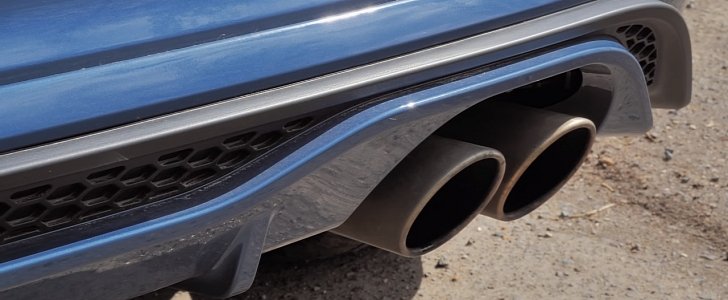When we heard that Ford is swapping the 1.6 EcoBoost for a 1.5-liter turbocharged three-cylinder engine in the Fiesta ST, a lot of people wondered how the newcomer would sound. This video will help you decide if it’s a pleasant sound or not, though we tend to believe the FiST makes decent noises when sitting still and on the move.
Going on sale in Europe this spring, the 2018 Ford Fiesta ST has 200 PS (197 horsepower) and 290 Nm (214 pound-feet) on tap. What that means is, the newcomer is on par with the Fiesta ST200 from the previous generation. But as opposed to the preceding model, this fellow promises to perform that lil’ bit better.
Acceleration to 100 km/h (62 mph)? That would 6.5 seconds instead of 6.7, thank you! Top speed is also higher, with Ford of Europe quoting 232 km/h (144 mph) compared to the 230 km/h (143 mph) of the Fiesta ST200. The metrics, however, tell half of the story if you bear in mind that technology is paramount in the 2018 FiST.
First and foremost, there’s the Quaife mechanical limited-slip differential (optional extra) that works in conjunction with Torque Vectoring Control to deliver the most traction possible without taking away too much of the engine’s torque by braking.
Then there’s the suspension setup. Even though Ford decided on a twist-beam rear, the automaker makes a case for 10 kilograms of weight saving and 1,400 Nm/deg of roll stiffness, “the firmest of any Ford Performance model.” Add twin-tube front and mono-tube rear dampers with RC1 valve technology developed by Tenneco, and the result comes in the guise of frequency-dependent damping.
The Torque Steer Compensation system manages power and torque delivery so that the steering wheel and front axle don’t get overwhelmed by the 1.5-liter EcoBoost. Last, but certainly not least, the driver can choose between three levels of intervention of the Electronic Stability Control, including wide-slip with limited intervention and complete de-activation of the electronic nanny.
Acceleration to 100 km/h (62 mph)? That would 6.5 seconds instead of 6.7, thank you! Top speed is also higher, with Ford of Europe quoting 232 km/h (144 mph) compared to the 230 km/h (143 mph) of the Fiesta ST200. The metrics, however, tell half of the story if you bear in mind that technology is paramount in the 2018 FiST.
First and foremost, there’s the Quaife mechanical limited-slip differential (optional extra) that works in conjunction with Torque Vectoring Control to deliver the most traction possible without taking away too much of the engine’s torque by braking.
Then there’s the suspension setup. Even though Ford decided on a twist-beam rear, the automaker makes a case for 10 kilograms of weight saving and 1,400 Nm/deg of roll stiffness, “the firmest of any Ford Performance model.” Add twin-tube front and mono-tube rear dampers with RC1 valve technology developed by Tenneco, and the result comes in the guise of frequency-dependent damping.
The Torque Steer Compensation system manages power and torque delivery so that the steering wheel and front axle don’t get overwhelmed by the 1.5-liter EcoBoost. Last, but certainly not least, the driver can choose between three levels of intervention of the Electronic Stability Control, including wide-slip with limited intervention and complete de-activation of the electronic nanny.



















